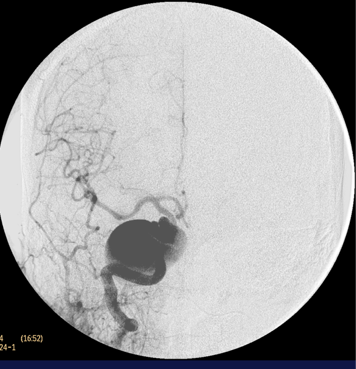Usted está aquí
Peruvian Journal of Neurosurgery
Deconstructive embolization of no surgical cerebral aneurysms: a ancient solution for a complex subject
ABSTRACT
Objective.- To assess the results of endovascular deconstructive embolization of large, wide neck and fusiform aneurysms.
Methods.- We retrospectively reviewed the clinical and radiographic data of 11 cases treated between 1995 and 2009.
Results.- From the 11 aneurysms treated, 9 were saccular and 2 fusiform. The symptoms associated were mass effect in 7 of 11 (63,6%) and subarachnoid hemorrhage in 3 of 11 aneurysms (27,7%). The deconstructive approach resulted in cure for 10 patients (90,9%). There were 2 complications (18,2%), one case resulted in aphasia and hemiplegia due to deflation and migration of the balloon to the middle cerebral artery; and another case developed a delayed reversible small lateromedullary ischemia (Wallenberg syndrome). Our clinical and angiographic follow-up ranged from 6 months to 14 years (mean: 3,1 years). In all of our cured patients, the clinical improvement started few days or weeks following embolization. The remission of mass effect symptoms was achieved in all patients except in one case with previous unilateral amaurosis.
Conclusion.- Deconstructive embolization of wide neck and fusiform aneurysms still remains a useful technique in selected cases. The clinical and angiographic criteria in the balloon test occlusion seem to predict accurately the tolerance of the parent vessel for its definitive occlusion in these challenging lesions.



